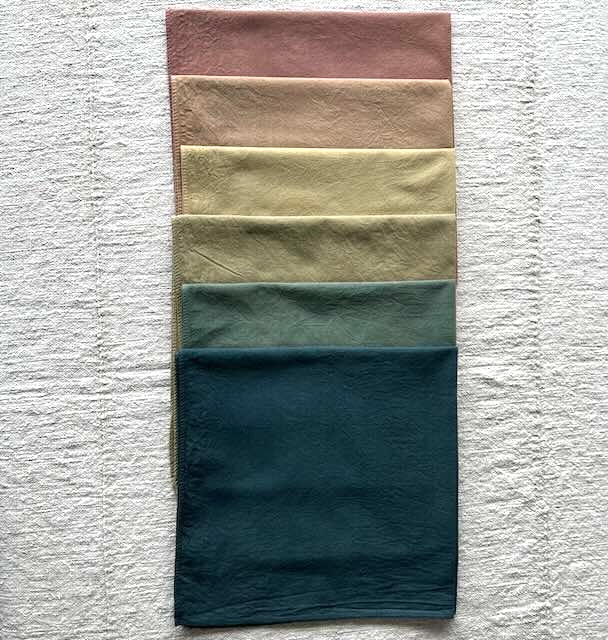
This week’s tannin exploration focuses on Myrobalan. I changed it up a bit this week by using our mordanted cotton bandana 6-pack as the base for exploring myrobalan. The convenience was a pleasant surprise and the colors came out beautiful. Myrobalan is a traditional cellulose tannin pre-treatment and dye, and used in Ayurvedic and traditional medicine. It’s an important color and used frequently in India and Southeast Asia.
Myrobalan imparts a light yellow on cotton with a subtle light brown undertone, making it an ideal foundation for color overdyeing, and indigo combinations. Like our other examples, when combined with other colors you can get exciting mixes and beautiful color blends that harmonize and are perfect for patchwork, creating gradations and stitching.
Skill level: Good for an intermediate dyer. You should be familiar with cellulose mordanting (or get the 6-pack and jump right in), dyeing with natural dye extracts, and indigo dipping and overdyes.
The inspiration for using Myrobalan comes from Sara Buscaglia of Ancient Futures Farm and author of the book Farm & Folk Quilt Alchemy (we have signed copies!) In her book, Sara beautifully articulated some ideas that I’d been mulling over and when I saw the results she achieved, I knew we should dive in and start testing colors. It’s been a lot of fun! Sara mentions that she uses Myrobalan with indigo for her Sage color. I was trying for a similar effect, but achieved slightly different results as the myrobalan I used created a darker gold than what Sara gets. I think that’s a lot of the fun of creating gradations: each dyer will achieve a slightly different result.
I used Myrobalan, Indigo and Lac for the color gradations.
Myrobalan and Indigo – the basic sequence
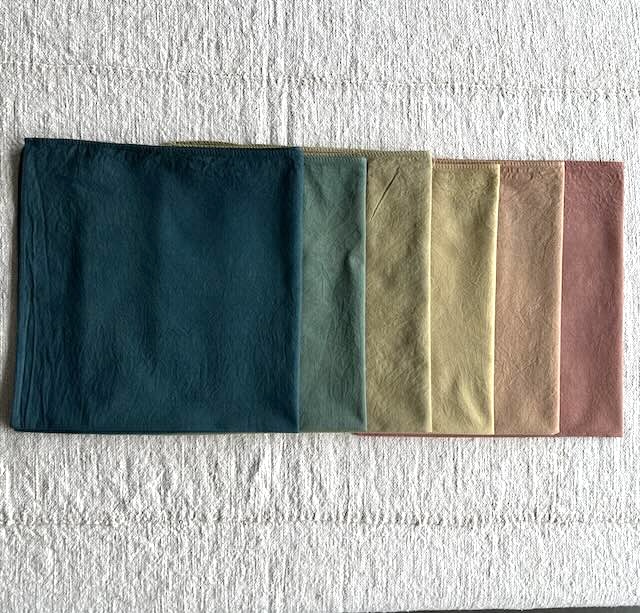
Pictured here are overdyed Myrobana samples with Indigo. From L-R: Dark indigo over myrobalan, light indigo over myrobalan and very light indigo over myrobalan. The yellow swatch is Myrobalan alone. The slightly warmer shade is Myrobalan overdyed with Lac in both a light and medium overdye.
Start with 6 pre-mordanted cotton bandanas. Weigh them dry so you have the weight for the entire batch and also for a single bandana.
Overdye all the bandanas with Myrobalan extract, using 10-15% wof. You will have 6 yellow bandanas. One bandana will stay yellow. Three bandanas will be dipped in indigo and two bandanas will be dyed with lac extract.
Rinse and dry one bandana. This is the myrobalan only dyed bandana.
Reserve 2 of the bandanas and set them aside for the lac gradation. Taking the remaining three bandanas, dip them in an indigo gradation for light, medium and dark shades. We dipped the dark blue-green bandana 6 times in a medium indigo vat. You may need to dip fewer times if your vat is strong. Rinse and dry all the gradations once you are done.
Take 2 of the bandanas and make a dye solution of 1% Lac. Add both bandanas to the dye pot and heat gently, stirring constantly. The bandanas should be both dyed a pale peach color. Remove them both, reserve 1 (rinse and dry). Add 5% more lac, using of the weight of 1 bandana for your calculation and put the second bandana back into the dye pot. Dye until it is a medium coral shade.
Once you have dyed all the gradations, arrange them and admire your work!
Notes:
- All of these colors were mordanted and dyed, with indigo being the last step in the process. This is the reverse of what we normally do in our studio but it makes for some beautiful colors! You can try either sequence to see if one method works better for you.
- Rinse after the final indigo dip and air dry away from direct sunlight.
- We dip our indigo at least twice, and use vats that are light, medium or dark strength.

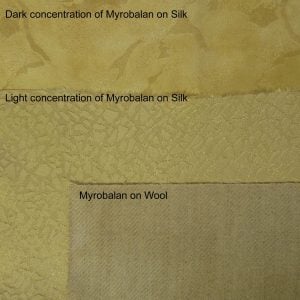


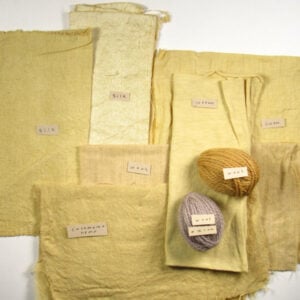

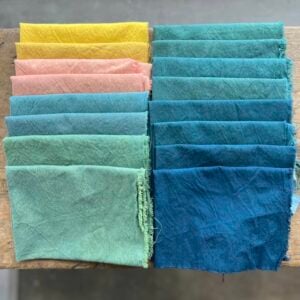
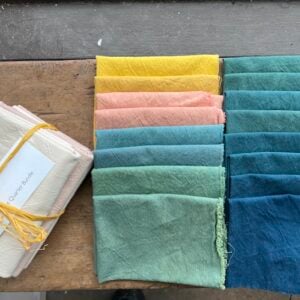
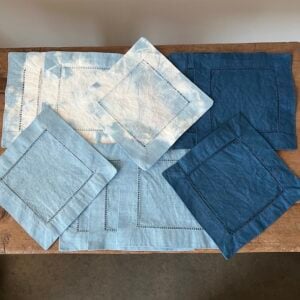
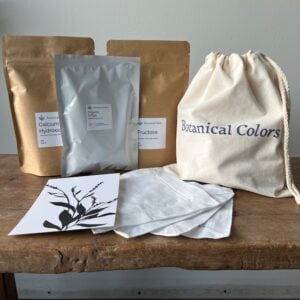
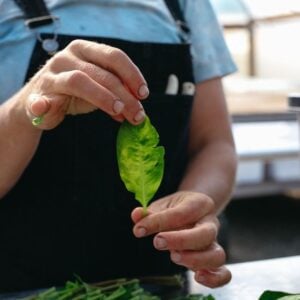
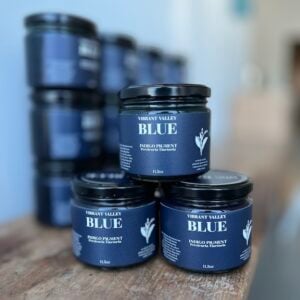
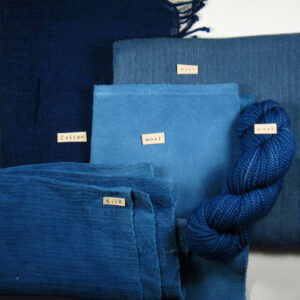
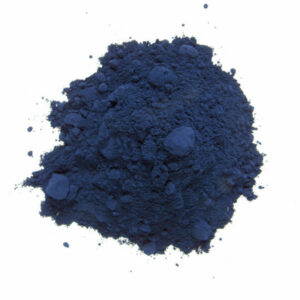
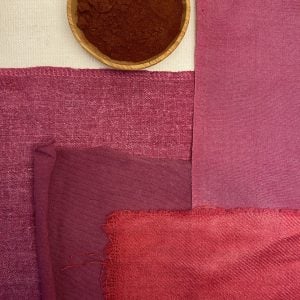
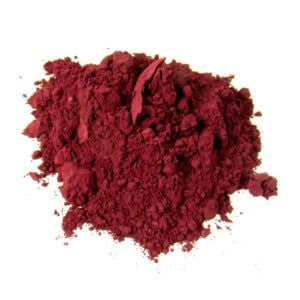
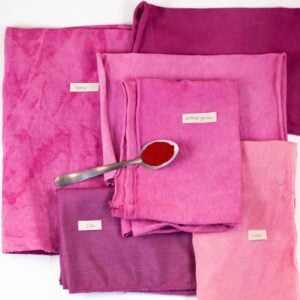
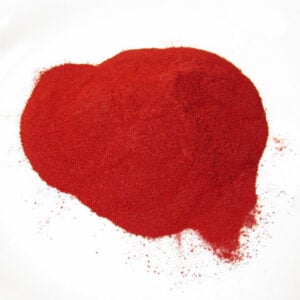
What mordant did you use before dyeing with Myrobalan ?
We used aluminum sulfate and soda ash tannin process for cellulose fibers and substituted myrobalan for the oak gall tannin. This is the process we’ve used for most of our tannin gradations and substituting a different tannin to change the colors up a bit.